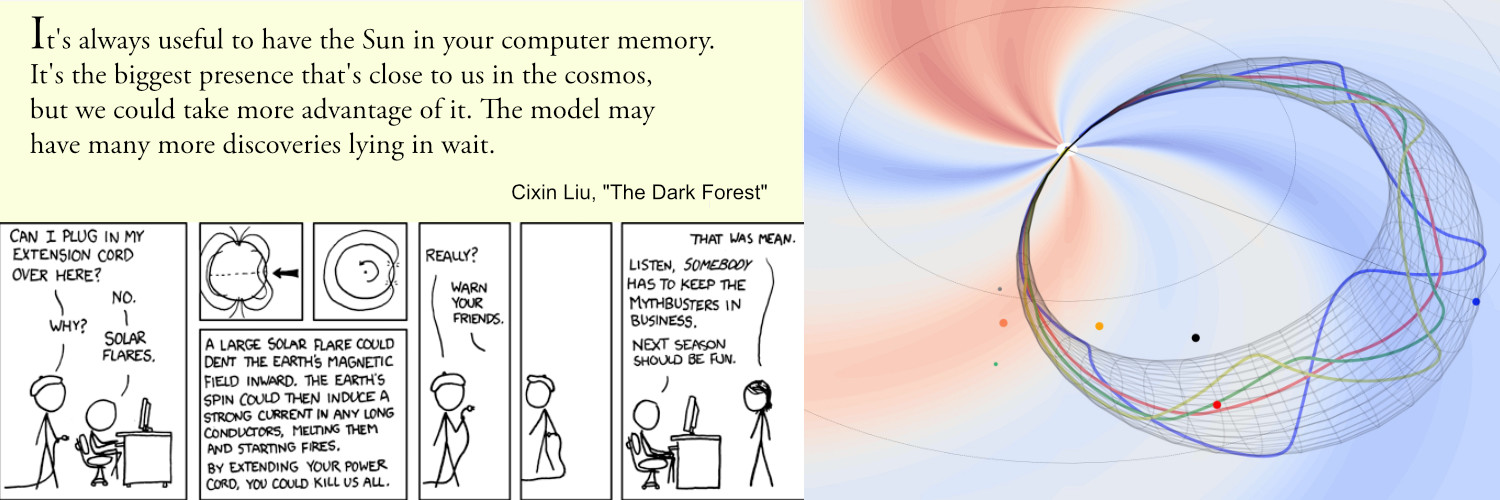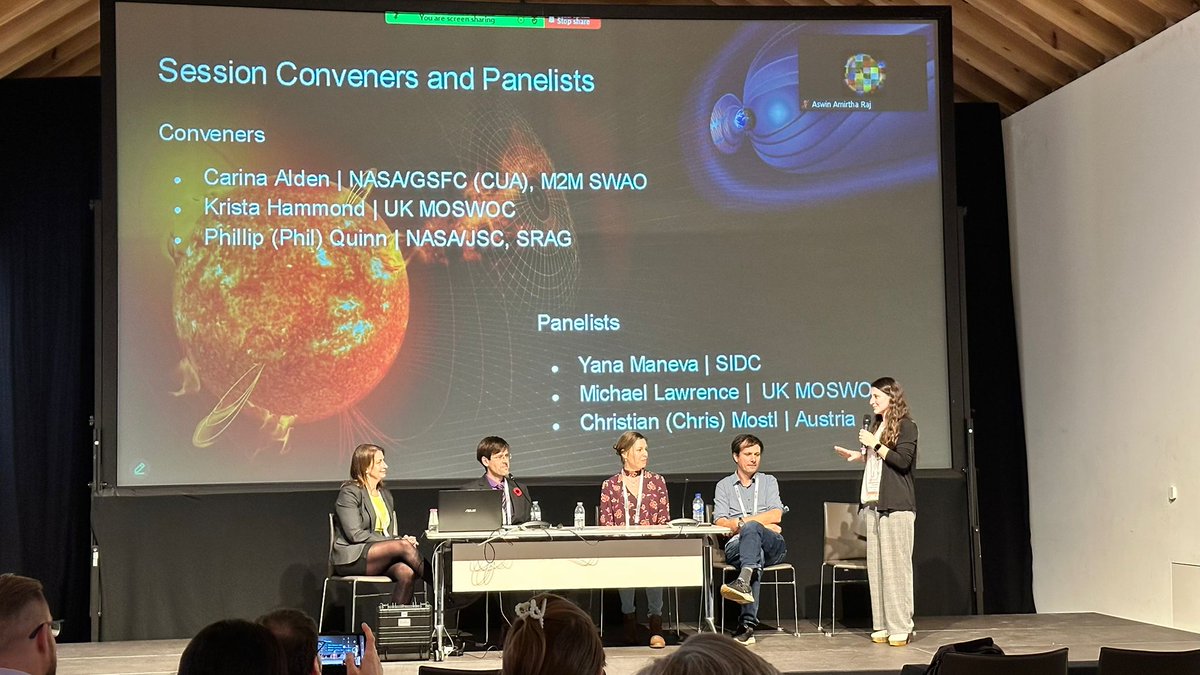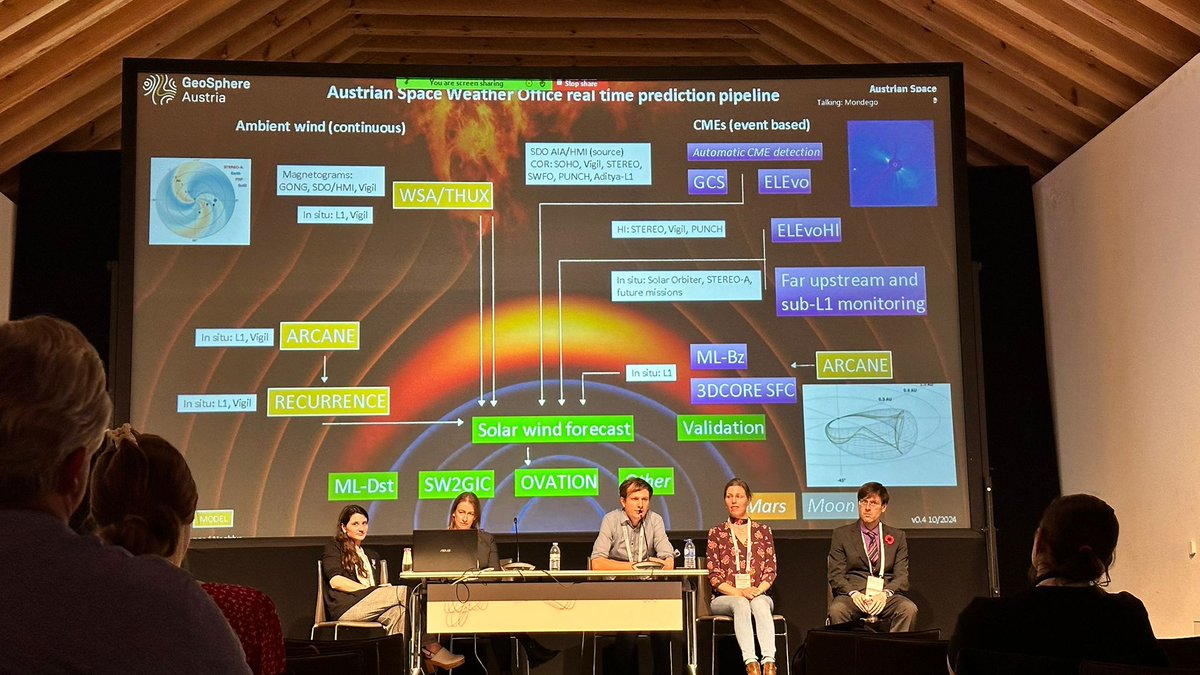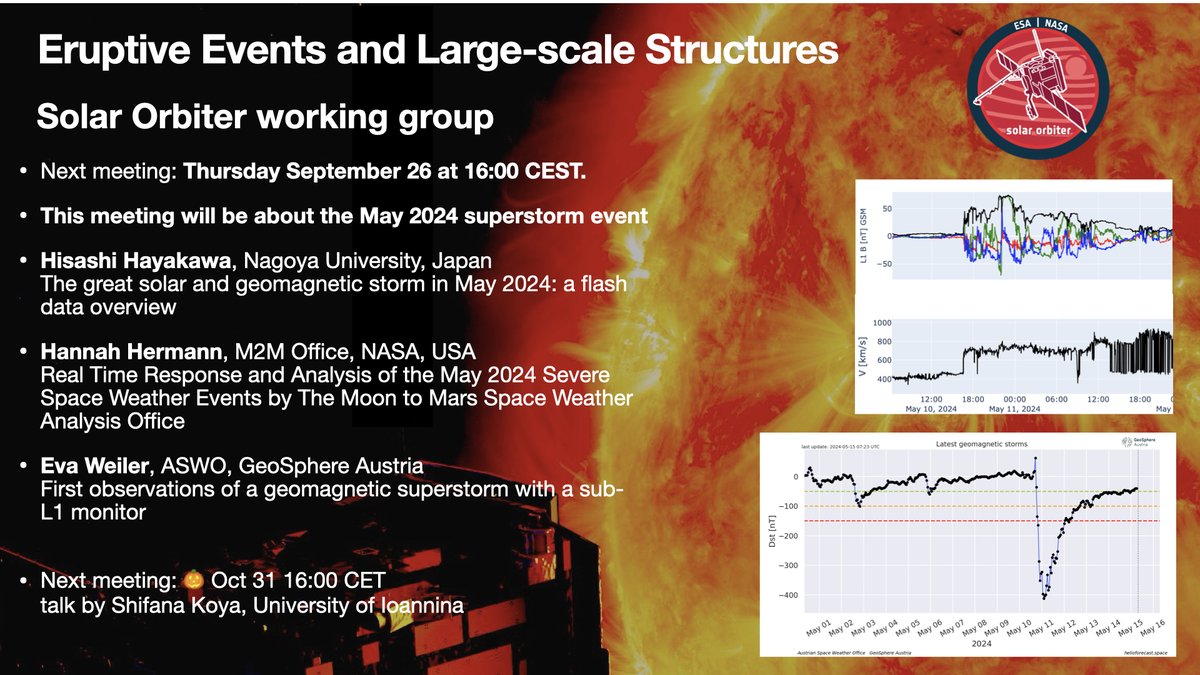
Christian Möstl
@chrisoutofspace
Head, Austrian Space Weather Office @ASWOGeoSphere | @geosphere_AT |☀️💥💨🌍 | @ERC_Research HELIO4CAST | http://helioforecast.space |
Wrapping up the #ESWW2024, @chrisoutofspace with a talk on predicting the geomagnetic effects of solar storms, and Ute Amerstorfer presenting a poster on predicting solar storm magnetic fields as they pass over the Earth. PLUS a first #ESWW workshop about @ESA_Vigil !
Auroral *occurrence* over the last 375 years has changed as a result of the Earth's magnetic field and solar activity. But auroral *reporting* has a human element; it requires occurrence overlapping with population. And very recently, tech. mathewjowens.github.io/publications/p…
Moments of pure happiness ❤️🔥 #NorthernLights visible to the naked eye last night at #Koralpe, #Austria. 7.10.2024 20:59, 21:02, 21:05, 21:09 UTC @JAtanackov @nikzimmer87 @ASWOGeoSphere @Gewitterjaeger @NicosPanoptikum @manu_oberhuber
New blogpost alert! This time on the spotlight is the Aurora Handbook and Field Guide for citizen science studies. Read the post prepared by @Maxime_Grandin @katieherli and Bea Gallardo-Lacourt blogs.egu.eu/divisions/st/2…
Was invited yesterday (for the first time💪) to be on a panel discussing the transition from research to operations and back (R2O2R) in #spaceweather at the #ESWW2024 with @MetOfficeSpace and SIDC Belgium, thanks @SpaceWxRina @KristaMitchy for hosting this nice discussion!


Here is the full mosaic of images from the SUOMI-NPP satellite. The auroral was quite far equatorward on the day of October 11 - so cool to see.
The aurora of last week's severe geomagnetic storm seen from space. This was visualized with the help of @eelcodoornbos's spaceweather.knmi.nl. A combination of NOAA-21, NOAA-20 and SUOMI-NPP data are used. I am beginning to use these datasets - tons of info here.
Here is a comparison to all geomagnetic storms in the solar cycles 23-25, with 10-11 October 2024 the blue line at the very right.
At a minimum of -335 nT Dst on 2024 Oct 11 01:00 UT this storm is now the the 2nd strongest of solar cycle 25. We are still in the magnetic obstacle of what is surely the Oct 9 eruption (the X1.8 flare), and after 8 hours now inside it we expect it to pass Earth in a few hours.
Note that rescue operations after Hurricane Milton might be affected due to #spaceweather, with ongoing strong flares and incoming solar storms over the next few days. This combination of hurricanes and space weather events as natural hazards happened in September 2017. e.g.…
The International Space Station just orbited above Hurricane Milton as it is re-intensifying over the southern Gulf of Mexico. Spectacular view from space.
Whats really cool: we may be able to use the interaction of the 2024 Oct 9 solar storm 💨 with the comet ☄️, if we see this in SOHO/LASCO or STEREO-A HI1, to constrain propagation models. The comet may thus act as a „natural“ solar wind monitor. theskylive.com/3dsolarsystem?…
Fast halo CME observed by LASCO C2 early this morning around 2:30 UT (feat. comet passing through the field of view)! Likely associated with the strong X1.8 flare, and with estimated speeds between 1500 and 1900 km/s, may arrive at Earth around midday UT tomorrow 🌞
Given that deep learning is everywhere in the physical sciences this is incredibly very well deserved! Bold choice for a physics prize though.
BREAKING NEWS The Royal Swedish Academy of Sciences has decided to award the 2024 #NobelPrize in Physics to John J. Hopfield and Geoffrey E. Hinton “for foundational discoveries and inventions that enable machine learning with artificial neural networks.”
Comet C/2023 A3 (Tsuchinshan–ATLAS) will return to the evening sky around the 12th of this month. The comet may be visible to the naked eye in daylight. Sky view map courtesy of Tony Scarmato.
In the @ESASolarOrbiter Eruptive Events working group, we have an online meeting tomorrow Thursday September 26 16:00 CEST, with 3 speakers on first analyses of the May 2024 super geomagnetic storm. Sign up here - we have almost 400 members! sites.google.com/view/solo-wg/w…

There will be a new webinar series on Solar Orbiter for the wider solar and space physics communities, on every 1st Wednesday of the month. cosmos.esa.int/web/solar-orbi…
A new study by Jeffrey Love et al. places the magnitude of the 1859 Carrington event at Dst = -964 nT with a 1 sigma range of -855 to -1087 nT. Very useful for future talks! swsc-journal.org/articles/swsc/…